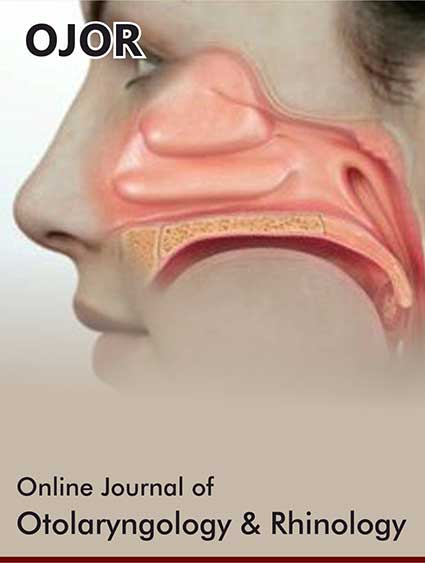 Research Article
Research Article
Interpretation of Computed Tomography of the Temporal Bone on Inverted Imaging by Otologists and Neurotologists
Mounika Naidu Boya1*, Nilesh Mahajan2, Vijayendra Honnurappa2, Vinay Kumar Vijayendra2, Miriam I Redleaf1 and Burce Ozgen3
1Department of Otolaryngology/Head and Neck Surgery, University of Illinois-Chicago, USA
2Vijaya ENT Care Centre, Superspeciality Otology Centre, Bangalore, India
3Department of Radiology, University of Illinois at Chicago, USA
Mounika Naidu Boya, Department of Otolaryngology/ Head and Neck Surgery, University of Illinois-Chicago, 1855 W. Taylor St. Suite 2.42, Chicago, IL 60612, USA.
Received Date: November 06, 2024; Published Date: November 20, 2024
Abstract
Objective: Radiologists use inverted image high resolution computed tomography (HRCT). Do inverted images help otologists and neurotologists identify temporal bone structures?
Methods: Two surveys compared identifying otosclerosis and the neural canals in regular versus inverted images. Survey 1 selected 7 regular/ inverted pairs of HRCT axial images from patients with successful stapedectomies. Seven regular/inverted pairs from non-pathologic HRCT temporal bones were normal counterparts to the otosclerosis bones. Thirty-five respondents reviewed these 28 images. Survey 2 selected 9 regular/ inverted pairs of non-pathological HRCT sections. Fourteen respondents identified the neural canals from the total of 18 images. Criterion-based scoring focused on those respondents with accuracy more than 72%.
Results: Twenty percent of respondents could diagnose otosclerosis, and 21% could identify the neural canals, with no significant difference between regular and inverted images.
Conclusion: Image orientation did not affect interpretation accuracy in those with the knowledge base to identify temporal bone structures.
Keywords: Temporal bon; Radiology; Computed tomography; Otosclerosis; Stapedectomy
-
Mounika Naidu Boya*, Nilesh Mahajan, Vijayendra Honnurappa, Vinay Kumar Vijayendra, Miriam I Redleaf and Burce Ozgen. Interpretation of Computed Tomography of the Temporal Bone on Inverted Imaging by Otologists and Neurotologists. On J Otolaryngol & Rhinol. 7(2): 2024. OJOR.MS.ID.000657.





